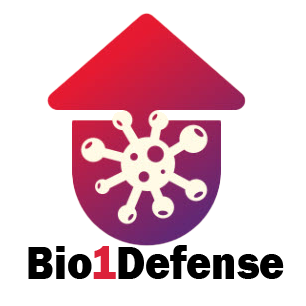- UVGI is an acronym Ultraviolet Germicidal Irradiation and is defined as the use of Ultraviolet wavelengths of light in the germicidal range (200-320nm) for the disinfection of air and surfaces. The Wavelength ranges incorporate both UVC and UVB spectrums. UVA is considered non-germicidal. Wavelengths below the 320nm threshold are known to cause photochemical reactions such as those which disable or deactivate the DNA of viruses, bacteria, and fungi.
- How does UVGI deactivate DNA? “UVGI is electromagnetic radiation that can destroy the ability of Microorganisms to reproduce by causing photochemical changes in nucleic acids. Wavelengths in the UVC range are especially damaging to cells because they are absorbed by nucleic acids. The Germicidal effectiveness of UVC peaks at about 260-265 nm (Kowalski, 2009)”
- The utilization and testing of Ultraviolet Germicidal Irradiation dates to the 1800’s. Many product and service offerings have been developed using the core principles of UVGI. The core principles are Irradiance (or intensity of light) multiplied by Exposure Time (seconds) equating to Dosage. When measuring a UVGI unit’s effectiveness one first will determine the irradiance, measured in watts per meter squared (W/m2) and the Exposure Time in seconds. The Dosage of a UVGI device factors in the element of time into the equation:
- D = Et x IR
- Dosage (D) = UV Exposure dose (measures in Joules per meter squared {J/m2})
- Et = Exposure time (seconds)
- IR = Irradiance (W/m2)
- A dosage analogy:
- You live on the coast and frequent the beach regardless of the time of year. During the summer you usually relax for longer periods of time on the beach in the bright sunshine and usually bring sunblock to protect your skin. Unknowingly you have already mastered the premise of Dosage. You are relaxing on the beach for a prolonged period of time [Et = Exposure time (seconds)] and the clear sky gives you a maximum amount of sunshine [IR = Irradiance (W/m2)]. Your Dosage during the summer is extremely high, necessitating an umbrella or sunscreen to prevent sunburn. Sunburn in this case closely correlates to the effects of UVGI. The dosage levels will increase in parallel with increasing durations of time spent at the beach and increasing amounts of sunlight intensity. Similarly, the deactivation rates associated with specific pathogens (viruses, bacteria, and fungi) will increase as dosage levels of UVGI increase.
- During the winter it is cold and when you visit the beach you likely are not staying for extended periods of time. Additionally, the sun is less intense as it is lower in the sky and it tends to be overcast in the winter. Fortunately for you can leave the sunblock at home as your dosage levels at the beach during winter are low. In this analogy the UVGI effect may be less significant and less damaging for a virus, bacteria, or fungi as they are subjected to lower levels of irradiance for a shorter exposure time.
- Generally, the larger the Dosage of UVGI, the greater the deactivation rates across all pathogens.
- The graphic below shows increasing dosage rates having increasing deactivation rates for the pathogen depicted. Certain viruses, bacteria and fungi have greater resistance to UV light than others. In these cases, the lower dosage rates from inferior products may only partially deactivate the pathogen or cause no damage at all. As we’ll explore in future blog posts, this presents a host of new challenges.

- The Continuous Disinfection Device (CDD) boasts an extremely high dosage rate when compared to competitors in the UVGI marketplace. The CDD significantly distinguishes itself by maintaining high dosage rates while processing high volumes of air. High volumes of air reduces the Exposure Time (Et) in the Dosage(D) formula, but the overwhelming Irradiance (IR) more than compensates for the reduction in the pathogen dwell time with the air chamber.
Conclusion:
UVGI is most effective at pathogen deactivation when Dosage levels are high. The CDD maintains high dosage rates while processing large volumes of air. In future blog posts we’ll explore how processing large volumes of air protects indoor spaces.
For more information or custom quotes for an extraordinary disinfection system please contact us!

